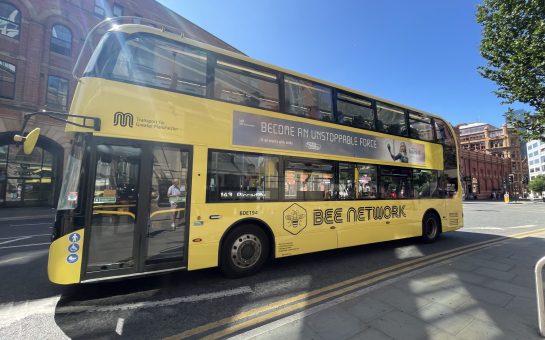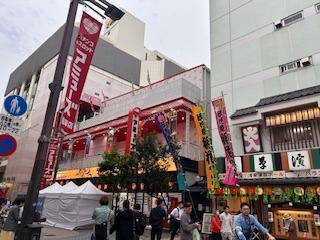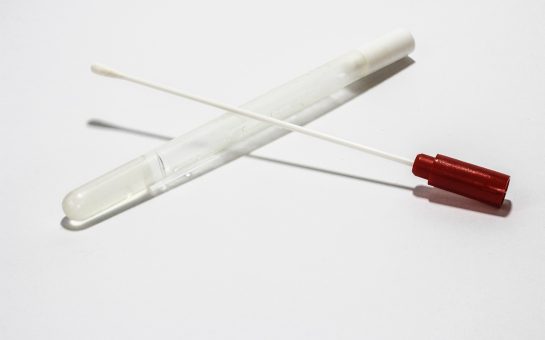Manchester is a well-known city across the world with transport links, sports teams and various industries that have a global appeal.
But how did the city achieve this international recognition? The answer is cotton.
In the early 1700s Manchester was a provincial town that was prospering under its own local economy.
As the 18th century progressed store fronts began to appear and people from the surrounding areas started to see Manchester as a place to buy exotic goods like sugar and tea.
Over time the town became gentrified and respectable as places like St Ann’s Square were established as part of a new attitude towards consumption.
So, where does cotton come in?
It was in Manchester that cotton fuelled a major part of Britain’s industrial revolution.
Richard Arkwright set up his first mill and the mechanising of cotton manufacturing in Derbyshire, before the industry eventually moved into the climate friendly Manchester.
Debenhams !!!!
Formerly a warehouse for the Rylands textile company.
Founder John Rylands (1801 to 1888) owned the largest textile business in the country and was Manchester’s first multimillionaire.. #Manchester #History #UniquelyManchester #ManchesterDay pic.twitter.com/hFHEpiNdSs— Uniquely Manchester (@Uniquely_Manc) June 6, 2018
The humidity in Manchester made spinning better as the fibres stuck closer together.
This meant the quality of the yarn that was produced for the cotton industry was better in Manchester and the area also had strong transportation links.
In a time before the railways Manchester was accessible by canals, which connected it to Staffordshire and Liverpool where its goods would be shipped worldwide.
The cotton industry attracted a multicultural range of people to the area, which in turn drew in related industries and by the end of the 18th century Manchester was a place where the best dying industries, woollen industries, and other textile industries were based because they were nearer to the cotton industry.
This gave rise to Manchester being nicknamed Cottonopolis.
‘DUAL IDENTITY’
The city snowballed into an area of very vibrant economic activity and the more people that arrived the more it became linked with other parts of the world.
Greek Merchants set up businesses here, Arab merchants came here and started trading with the Middle East, German merchants came, and it continued to attract a huge variety of people.
By the late 1780s the city doubled in size from what it was at the start of the century.
But this industrialisation also brought problems.
The population grew but the size of the city did not, overcrowding became a huge problem, diseases spread like wildfire, Cholera was rampant, and many people lived in poverty.
Yet at the same time philosophical societies began to appear, libraries and museums were established, and green spaces were created as Manchester developed a sense of culture.
Dr Aashish Velkar, a lecturer in Economic History at the University of Manchester, gave MM the whole story.
“Manchester is a place where there is an exchange of ideas but what is different about Manchester compared to other cities is the industrial squalor,” he said.
“This is one of the negative effects of the cotton industry on the city. There is a dual identity in Manchester. Two worlds that inhabit the same space.”
Yet out of the squalor, created because of the cotton industry, came new medical knowledge, safety regulations and the first drainage sewer systems.
Many of the things we take for granted today have their roots in Manchester’s cotton industry.
The first trade unions were formed in the city and by the late 19th century there was a huge amount of change in legislation, in terms of social change and political thought.
So, what happened to the cotton industry?
LABOUR MOVEMENT AND CAPITALISM
“The high tide of Manchester’s cotton prominence is probably from the late 19th century until just after the First World War and after that it was in decline,” added Dr Velkar.
Competition grew from other parts of the world and places like America, Japan and India started producing their own cotton.
After the Second World War there was competition from synthetic fibres and there wasn’t enough investment in traditional industry in terms of innovation and new developments.
So much so that the Royal Exchange (main picture), Manchester’s home for the cotton industry, ceased trading in 1968, exactly 50 years ago.
What then is the legacy of the cotton industry on Manchester?
Dr Velkar believes that it was cotton that put Manchester on the map.
“Cotton makes Manchester a global city, it makes the people who are involved in the industry global players and they influence changes that have effects, not just at the national level but at an international level.
“For cotton in Manchester the two biggest legacies are the two contradicting viewpoints: The Labour movement and Capitalism.
“They both begin here in Manchester, if you are talking about the enduring legacy this is it. The two biggest and polemically opposite political viewpoints grew out of this industry.
“What bigger legacy can a city provide than these two contrasting viewpoints?”
Image courtesy of Gidzy via Flickr, with thanks.



